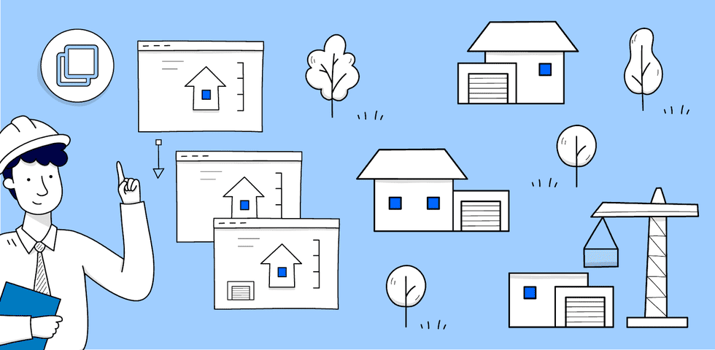Jira is a popular project management tool extensively used for managing not only software development projects but also a wide range of other projects unrelated to software development.
While many projects are unique and benefit from starting afresh with a blank project, there are also recurring ones that involve similar requirements. Let's take the example of a construction company that employs Jira to manage its house-building projects.
For each house they construct, they create a separate Jira project. Within each project, they create Jira issues for every step involved in the building process, such as foundation setup, plumbing and electrical work, and insulation and drywall installation.

Setting up such a project manually, even with a clear understanding of the necessary steps and utilizing Jira's clone feature, can be time-consuming, frustrating, and prone to errors. One would have to copy the project with the same configuration, duplicate the project board, and manually clone each individual task. Additionally, bulk changes would be required to move the issues to the new project.
Another option is to copy the issues using a CSV file, but usually, this can only be done by an administrator. However, constantly relying on the administrator to perform bulk cloning using CSV files may overwhelm them, as they likely have other responsibilities to handle.
How to clone Jira projects easily
Besides setting up Jira projects manually or using a CSV file, there is another way to clone a project in Jira: Deep Clone for Jira by codefortynine.
To begin with this Marketplace app, using the Deep Clone dialog, you need to selecte the project you want to clone as the source. Next, choose "clone project" under the target project and initiate the process, which replicates the project and its configuration.
The following recurring projects and scenarios are commonly replicated using Deep Clone:
- Customer onboarding: Initiating the contract, conducting needs assessment, drafting and finalizing the proposal and agreement, and completing onboarding forms.
- Employee onboarding: Preparing pre-boarding activities such as setting up workstations, email accounts, and software access. Providing role-specific training, and granting access to resources and support.
- Due diligence for potential targets: Performing financial analysis, assessing risks and opportunities, and compiling due diligence reports.
- Technical requirements and system checks prior to release: Conducting compatibility testing, performing performance testing, ensuring security through testing, assessing compliance, and reviewing documentation.
Typically, it takes less than 10 minutes to clone a project that has 50 issues. If you have a project containing a vast number of issues, you can start the cloning process and allow it to run in the background as you focus on other tasks.
This way, you only need to actively focus on it for a few minutes, freeing up the rest of your time for more significant responsibilities.

When you have a substantial number of issues to clone, there's no need to worry because you can clone up to 100,000 issues simultaneously. Since such a massive cloning process may take some time, the "bulk clone" feature operates in the background. You can easily monitor the status and access the log history anytime through the clone history.

You have plenty of freedom in selecting and customizing which field values to clone, such as comments, sprints, or the issue status.
Suppose you wish to substitute a particular text string in the summary, like [Sample Street], with "221B Baker Streetâ" or update the due date field. In this case, the field editor comes in handy, allowing you to personalize the values in the cloned issues according to your preferences.

As you can see, Deep Clone for Jira saves a significant amount of time for anyone dealing with recurring tasks. Whether you're a manager responsible for onboarding new team members regularly, ensuring that accounts, hardware, and training are all set up in a timely manner to create a positive first-day experience or a QA lead striving to meet all requirements before a release, Deep Clone proves invaluable.
Regardless of the scenario involving repetitive or similar tasks, Deep Clone accelerates the process and safeguards against any oversights, ensuring smooth operations.
The app provides many advantages beyond the ones already mentioned. These include cloning epics and larger issue hierarchies and maintaining their hierarchy when duplicated. Move Jira issues to other projects or migrate thousands of issues to other instances. Additionally, users can clone Jira issues multiple times and automate the cloning process.
Project management
Deep Clone for Jira offers a seamless solution for project management, simplifying the process of cloning projects and issues. Its user-friendly interface, flexibility, and powerful features make it an efficient tool for replicating recurring projects and streamlining workflow.
By eliminating manual tasks and providing customization options, Deep Clone enhances productivity and saves valuable time for project managers and team members.
Want to learn more about Deep Clone for Jira?
Published: Jun 26, 2023
Updated: Nov 18, 2024


.png?width=200&name=Atlassian-Cloud-Pillar-page%20(1).png)